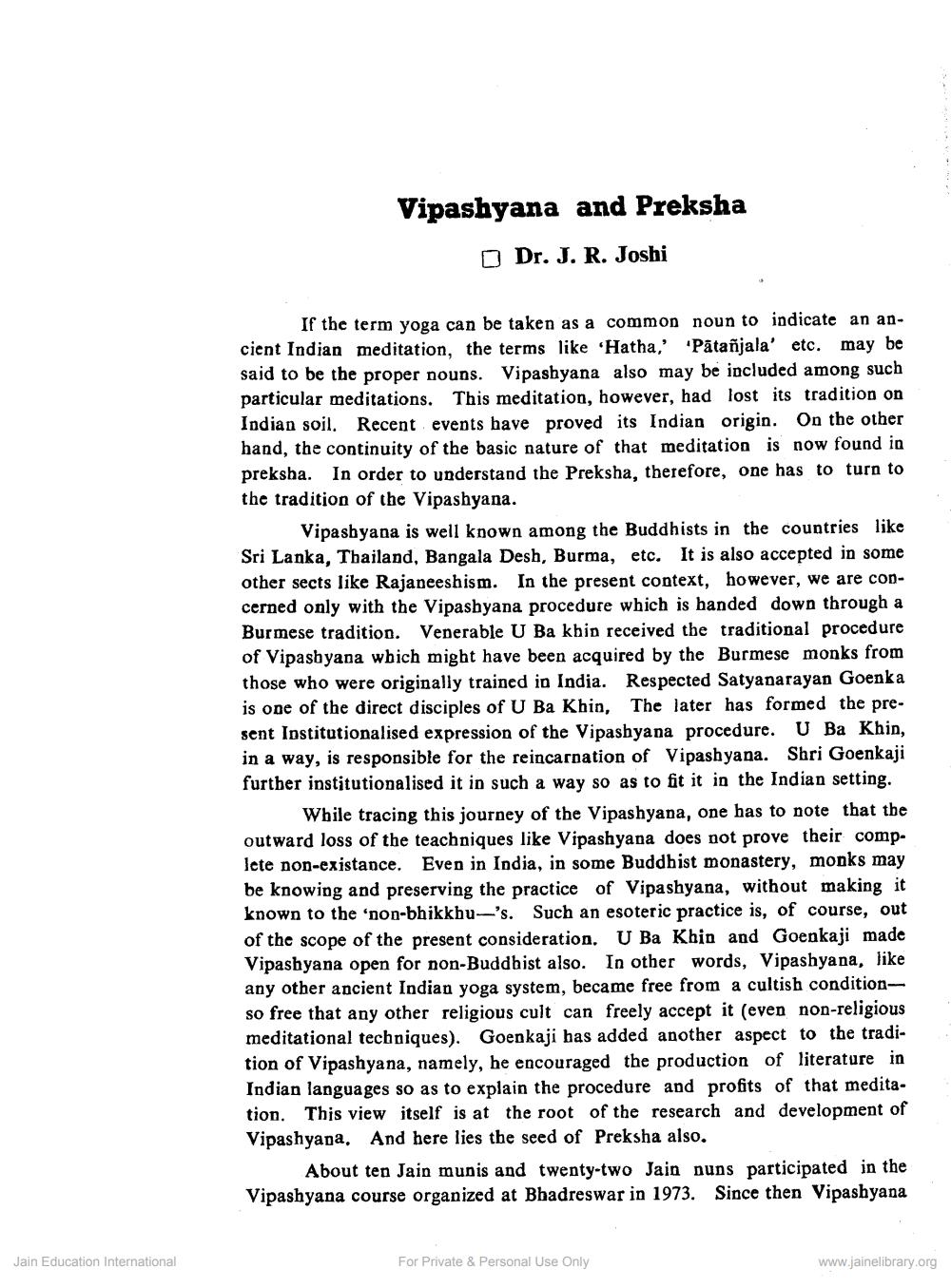Book Title: Vipashyana and Preksha Author(s): J R Joshi Publisher: Z_Umravkunvarji_Diksha_Swarna_Jayanti_Smruti_Granth_012035.pdf View full book textPage 1
________________ Vipashyana and Preksha Dr. J. R. Joshi If the term yoga can be taken as a common noun to indicate an ancient Indian meditation, the terms like 'Hatha,' 'Patañjala' etc. may be said to be the proper nouns. Vipashyana also may be included among such particular meditations. This meditation, however, had lost its tradition on Indian soil. Recent events have proved its Indian origin. On the other hand, the continuity of the basic nature of that meditation is now found in preksha. In order to understand the Preksha, therefore, one has to turn to the tradition of the Vipashyana. Vipashyana is well known among the Buddhists in the countries like Sri Lanka, Thailand, Bangala Desh, Burma, etc. It is also accepted in some other sects like Rajaneeshism. In the present context, however, we are concerned only with the Vipashyana procedure which is handed down through a Burmese tradition. Venerable U Ba kbin received the traditional procedure of Vipashyana wbich might have been acquired by the Burmese monks from those who were originally trained in India. Respected Satyanarayan Goenka is one of the direct disciples of U Ba Khin, The later has formed the present Institutionalised expression of the Vipashyana procedure. U Ba Khin, in a way, is responsible for the reincarnation of Vipashyana. Shri Goenkaji further institutionalised it in such a way so as to fit it in the Indian setting. While tracing this journey of the Vipashyana, one has to note that the outward loss of the teachniques like Vipashyana does not prove their complete non-existance. Even in India, in some Buddhist monastery, monks may be knowing and preserving the practice of Vipashyana, without making it known to the 'non-bhikkhu-'s. Such an esoteric practice is, of course, out of the scope of the present consideration. U Ba Khin and Goenkaji made Vipashyana open for non-Buddhist also. In other words, Vipashyana, like any other ancient Indian yoga system, became free from a cultish conditionso free that any other religious cult can freely accept it (even non-religious meditational techniques). Goenkaji has added another aspect to the tradition of Vipashyana, namely, he encouraged the production of literature in Indian languages so as to explain the procedure and profits of that meditation. This view itself is at the root of the research and development of Vipashyana, And here lies the seed of Preksha also. About ten Jain munis and twenty-two Jain nuns participated in the Vipashyana course organized at Bhadreswar in 1973. Since then Vipashyana Jain Education International For Private & Personal Use Only www.jainelibrary.orgPage Navigation
1 2 3 4 5 6 7 8 9 10 11 12 13
